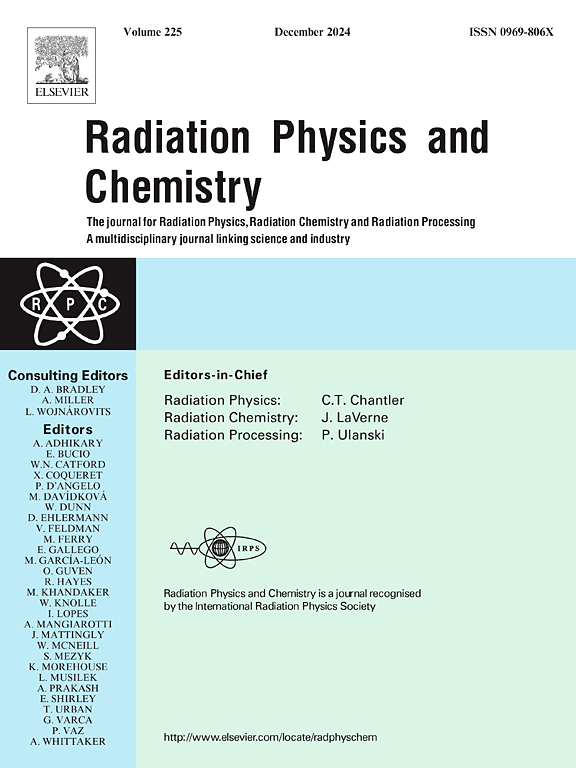Tuning the structural and optical features of V2O5 nanostructured films by Bi-doping and γ-irradiation for smart window applications
IF 2.8
3区 物理与天体物理
Q3 CHEMISTRY, PHYSICAL
引用次数: 0
Abstract
Doping and radiation exposure are two of the most preferred stratagems for enhancing the efficiency of V2O5 for optoelectronic and smart window applications. This work studies the effect of Bi-doping and γ-ray irradiation on the structural and optical properties and color change of V2O5 films developed by casting/spin coating processes. Firstly, pure and Bi-doped V2O5 nano-sized powders with batonnets-like morphology (packs of nano-rods having diameters in the range of 7.28–16.28 nm and 9.32–95.49 nm) were prepared by a facile chemical route. The films were prepared by casting/spin-coating a suspension solution of the powder on glass substrates. X-ray diffraction (XRD) results indicate the formation of a layered V2O5 of orthorhombic structure, highly oriented in the (001) direction, with a crystallite size in the range of 35.8–51.3 nm, depending on the irradiation dose. The Fourier transform-infrared spectroscopy (ATR/FTIR) exhibited the presence of V–O–V, V![]() O vibrations, with intensities sensitive to Bi-doping and absorbed dose. Investigating the optical features reveals that the films are semi-transparent. The pure V2O5 and Bi-doped V2O5 films have optical direct (indirect) band gaps in the ranges of 2.6–3.0 eV (1.3–1.6 eV) and 2.3–2.9 eV (1.1–1.5 eV), respectively. The optical parameters (k-index and the refractive index) can be tuned by Bi-doping and γ-ray doses. The CIE colorimetry was used to evaluate the CIE LAB , , , and the total color change () values. The results indicated that b∗ and L∗ can be used individually as a dosimetry index at doses ≤30 kGy. The results illustrate the feasible controlling of V2O5 films by Bi-doping and γ-irradiation for optoelectronic devices, dosimetry, and smart windows.
O vibrations, with intensities sensitive to Bi-doping and absorbed dose. Investigating the optical features reveals that the films are semi-transparent. The pure V2O5 and Bi-doped V2O5 films have optical direct (indirect) band gaps in the ranges of 2.6–3.0 eV (1.3–1.6 eV) and 2.3–2.9 eV (1.1–1.5 eV), respectively. The optical parameters (k-index and the refractive index) can be tuned by Bi-doping and γ-ray doses. The CIE colorimetry was used to evaluate the CIE LAB , , , and the total color change () values. The results indicated that b∗ and L∗ can be used individually as a dosimetry index at doses ≤30 kGy. The results illustrate the feasible controlling of V2O5 films by Bi-doping and γ-irradiation for optoelectronic devices, dosimetry, and smart windows.
求助全文
约1分钟内获得全文
求助全文
来源期刊

Radiation Physics and Chemistry
化学-核科学技术
CiteScore
5.60
自引率
17.20%
发文量
574
审稿时长
12 weeks
期刊介绍:
Radiation Physics and Chemistry is a multidisciplinary journal that provides a medium for publication of substantial and original papers, reviews, and short communications which focus on research and developments involving ionizing radiation in radiation physics, radiation chemistry and radiation processing.
The journal aims to publish papers with significance to an international audience, containing substantial novelty and scientific impact. The Editors reserve the rights to reject, with or without external review, papers that do not meet these criteria. This could include papers that are very similar to previous publications, only with changed target substrates, employed materials, analyzed sites and experimental methods, report results without presenting new insights and/or hypothesis testing, or do not focus on the radiation effects.
 求助内容:
求助内容: 应助结果提醒方式:
应助结果提醒方式:


